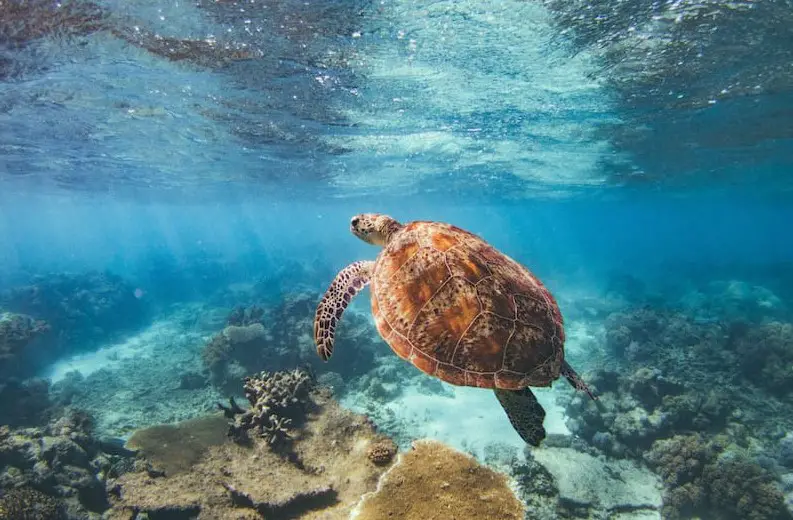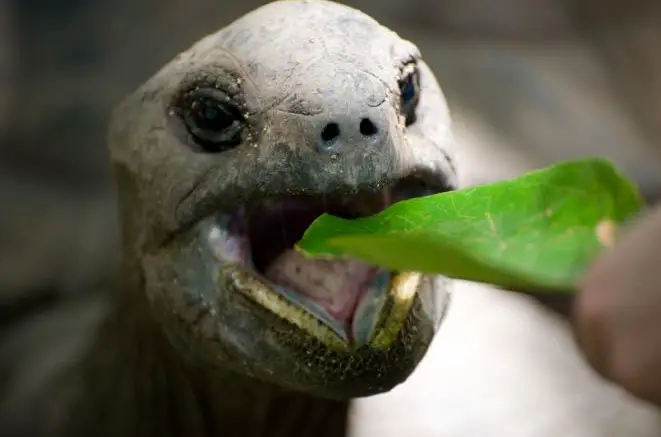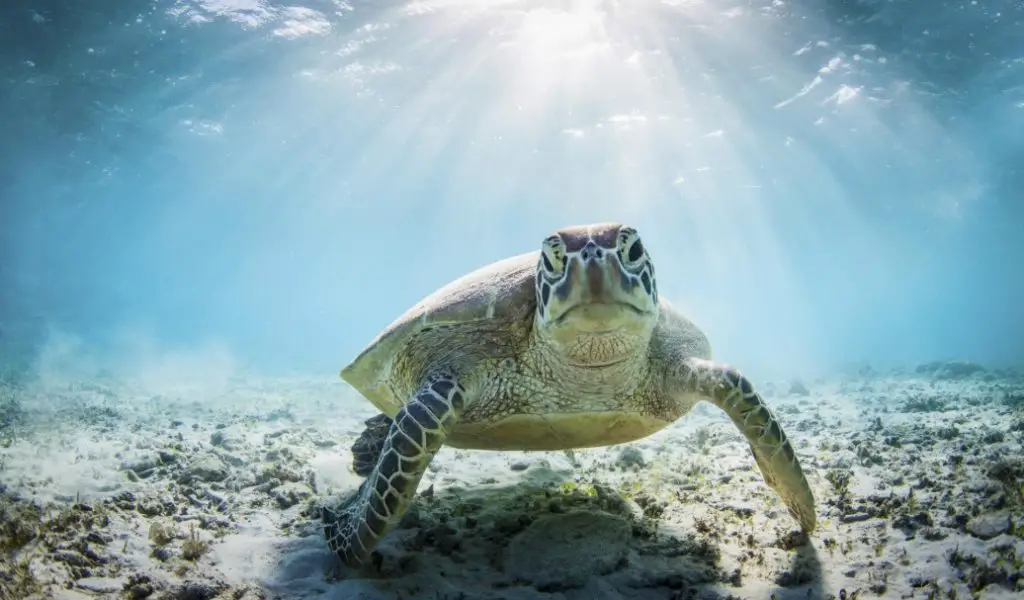The calm personalities or the appealing colors and markings are only some of the many reasons for which so many of us find the turtles fascinating. Regardless of what some may think, turtles can be interactive pets, capable of recognizing their owners and always begging for food (always). It’s what makes them so adorable, though.
Even though they may look easy to take care of, that couldn’t be much further than the truth. Turtles may not like the same handling as cats and dogs, but they also need constant care and…food (did we say food?). They live for decades and may outlive you, which only makes them even better pets. When you get a turtle, you invest for the long run- with the condition that you always take good care of it.
Page Table of Contents
What are the primary necessities for turtles?

First thing first, the housing for your turtle should be substantial. The rule of thumb is the bigger, the better. Most of the aquatic turtles out there are active swimmers, so it’s better that you go with a large size tank, with glass tanks being one of their favorites.
- The tank
If your turtle is between 4 to 6 inches, the tank should be at least 30-gallons, whereas an 8 inches turtle is going to be happy enough in a 75-125 gallon. You can start with a smaller container if the turtle is tiny, but you should be ready to go bigger as your turtle grows.
- The filtration system
Keeping the water clean in the tank is fundamental. Therefore you should look for a reliable filtration system for the turtle tank. The canister filter and the internal aquarium filter to make it as good options. One thing you cannot complain about is the variety of filtration systems for turtle tanks, so spend some time before buying one. Don’t forget that turtles are quite messy, so you need to keep the filtration system in good shape at all time.
- Plastic tub- when you’re lucky
Plastic containers work as well as housing options for turtles, and you can find them in most hardware stores. You may find models that are designed for turtles, coming with both water and land area. An indoor/outdoor pond is a choice to consider too.
- Tank decorations
You shouldn’t exaggerate on the tank decorations as your turtle is going to destroy it sooner or later. The substrate is going to collect plenty of waste and uneaten food, altering the water, so you should think twice before using it.
On the other hand, some species (soft-shell turtles are a good example) do require a soft sand bottom. The majority of turtles don’t need gravel or any substrate, which makes the cleaning a lot easier.
If you don’t like the aesthetic of a bare-looking tank, you should decorate it. Just make sure that you’re ready to spend more time and energy for cleaning the tank.
- Basking spot
The basking spot is truly the only piece of décor that your turtle needs. Whether it’s a rock (carefully placed), a ready-made basking platform (you can buy it at a local pet store), or a piece of driftwood, you should always have one for your tiny friend. The above-tank platforms are an excellent choice for many aquatic turtles.
No matter which type you choose, keep in mind that the basket spot has to be large enough so that your turtle can climb out of the water entirely. It’s also fundamental that you always use basking light as well.
What does a turtle eat?

Better safe than sorry is fundamental when it comes to the turtle as pets, and one way to do that is to pay attention to their food. A well-balanced diet is essential for keeping your turtle happy and healthy. You should provide it with various and quality turtle food at all times.
As the turtle grows, its dietary needs change too. Even if it’s carnivorous in its early age, a turtle is going to eat more plant matter once it gets mature. It’s not unusual for an adult turtle to eat plant matter most of the time.
Turtle pellets are a solid choice, but you shouldn’t rule the freeze-dried or frozen foods out either. Crickets, krill, snails, and grasshoppers can make a turtle happy too. Small fish, insects, snails, or worms are live alternatives to keep in mind. You can dust them with calcium for better benefits for your turtle’s health.
As for greens, the green and red-leaf lettuce, and the dandelion leaves are something that turtles enjoy eating. Some aquatic plants (water lettuce, anacharis, or water hyacinth) should be on your shopping list too. Even if the iceberg lettuce is available, it doesn’t have much nutritional value for your turtle, so you shouldn’t count on it. Cabbage, mushrooms, and spinach are also on the “no” list, along with the fruits.
Why is lighting so crucial for turtles?
Unfortunately, lighting is misunderstood and way too often owners undermine its importance. Heat and ultraviolet light are fundamental for the well-being of turtles.
UVA light is sustaining the natural behavior of turtles (feeding and reproduction are the main ones). But turtles also need UVB light, which is essential for the synthesis of the vitamin D3, which helps with the calcium absorption and metabolism. A turtle is going to grow right if it’s exposed to the proper amount of UVB light. Not exposing the turtle to UVB poses a risk for its health, causing secondary hyperparathyroidism, weak shell growth, and even a shorter life span.
Light gives heat, which is why turtles need it so much. Just like any other reptile, turtles are ectotherms, which means that they require various temperature zones for controlling the body temperature. The rule of thumb is to keep the basking spot’s temperature between 85 to 95 F degrees. The water temperature has to be 10 to 15 degrees lower than the heat on the basking spot. Using a submersible tank heater may help.
There are a lot of light systems and bulbs that work for your turtle tank. No matter your final choice, you need to be convinced that it accomplishes your turtle’s UV and heat needs. Not all turtles have the same needs, so you should do your homework before buying.
The Do’s &Don’ts when owning a turtle!
Now that you know a thing or two about the necessities of a turtle, find out the most important rules to follow when you own a turtle:
- Do
You should always buy captive-bred turtles. As they’ve known only the captivity, the risk for parasites and disease is lower. They’re also more adapted to the commercial turtle foods. No matter where you’re buying it from (local pet store, online or a breeder), it’s vital that you know if your turtle is a wild caught or a captive bred. You can always adopt a turtle from the local turtle rescue organization.
- Don’t
It’s better that you don’t collect an animal from the wild. Most of the states don’t allow native collections as many turtle species are endangered, which makes collection illegal.
Don’t release your turtle into the wild either, as you may cause some significant environmental problems. On top of everything else, the turtle may not be able to endure the harsh local conditions, which poses a risk for its life.
Other resources
Keeping a Turtle? Here are Some Tips All New Turtlekeepers Need To Know
Pros and Cons of Having a Pet Turtle or Tortoise
Do Turtles Make Good Pets? | ReptiFiles







